I'm trying to convert an arbitrary input number from a laptop microphone into SPL. The microphone specs are available on https://docs-emea.rs-online.com/webdocs/105f/0900766b8105f0e3.pdf.
From what I've read on another article, the equation is 20 x log (V1 / V0), V1 being the voltage measured and V0 being the reference level. The reference level (V RMS) I've found online for -42db is 0.001776 but I'm unsure what the V1 number should be. According to the other article, it is the gain that the preamp has applied but I'm not sure if this relates to what I'm doing, or how to find this number.
Any help would be much appreciated.
The article I'm referencing is How to convert Volts in dB SPL.
Thanks in advance!
